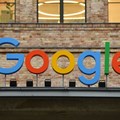The average consumer is becoming ever more cost-conscious, and is likely to become even more frugal with the current economic impact on South African fuel, electricity and food prices.
Considering how every cent counts for millions across the country already, it is not surprising then that many have found ways to maximise their spending power by being smart with how they choose their brands.
Opera South Africa recently served surveyed millions of South Africans through its user base to find out purchasing habits and behaviours with a view to providing brands with insights into how to reach them more often. This is the second survey of its kind, having been undertaken previously in 2020. The survey looked at categories ranging from finance to FMCG, from telecoms to broadcasting.
Here are the key findings:
Finance
Of particular interest, the survey revealed that 75% of the sample have a bank account, and the most common brand is with Capitec (54%). This is followed by FNB (14%) and Standard Bank (10%).
Bank accounts are also the most common means with which to receive wages (53%), followed by cash (24%) and e-wallet (23%). 16% have their wages deposited into someone else’s bank account.
FMCG
When it comes to FMCG, Shoprite was the clear favourite with 38% of the sample preferring to shop at this retailer compared to Pick n Pay (23%), Spar (16%) and Checkers (9%). The survey also revealed that shoppers visit their shop of choice once a month (27%) or once a week (24%), with only 9% shopping daily.
“What is evident from these insights is that Opera users are cost-conscious and are choosing to shop at brands that offer the best prices. This is indeed a sign of the times, and as food prices will likely rise due to global shortages, not to mention the extraordinary price of fuel – which also affects the transportation of goods – we can expect to see more consumers switch to retailers that offer the best value for money,” says Sarah Utermark, director of brand and global partnerships at Opera South Africa. This is supported by the survey statistics revealing that almost 50% of users shop at outlets because of the most affordable prices.
Telecoms
Telecoms was another interesting category, especially when it comes to data usage. The majority of respondents (59%) prefer converting airtime to data, a 10% increase from 2020. The use of a USSD string to purchase data dropped from 13% down to 12% while purchasing vouchers jumped from 15% in 2020 to 18% in 2022. Further, the provider’s App of users has doubled in popularity from 5% in 2020 to 10% in 2022.
Somewhat surprisingly, given how cost-conscious consumers are, only 41,5% were aware of data bundle specials. And while the majority of the sample are MTN and Vodacom subscribers, the survey showed that 34% perceived Telkom to offer the best data among the telecoms providers (R79 per gigabyte), while in fact it is Cell C that offers the lowest rate (R65 per gigabyte). This equates to roughly $4, which is down from $7 as reported in Opera’s 2019 State of Mobile Report for Africa, demonstrating that the price of data has decreased.
“Comparing data from 2019 and 2020, it is extremely interesting to see the change in behavioural purchasing habits. There’s a real opportunity for telcos to hone in on the data saving desires of consumers. The fact that converting airtime to data usage has seen an incline - no doubt attributed to working from home on the back of the pandemic – coupled with the preference of using WhatsApp as a means of calling - means that data, and how its packaged for our everyday lives, really matters to us as consumers,” says Utermark.
Once data has been purchased, people use it to browse the web (22%), use WhatsApp (65%), email (48%), access news Apps (43%) and play games (14%).
Interestingly, whatever Opera users choose to do with their data, they are spending just 22 minutes on their browser on average each day doing it. This versus the 3 hours and 30 minutes a day that the majority of South Africans spend connecting to their mobiles.
Sofia Christensen 22 Mar 2022
“This points directly to maximising data usage. In South Africa, compared to the average income earned per day of R200, data is very expensive at around R78 per gigabyte. This compares to international territories where the income/ data costs are more aligned,” comments Utermark.
The retention rate of users going back into mobile web compared to App however seems to grow over time, highlighting the importance of marketers to rethink “mobile web” when reaching their consumers instead of just focusing on the App environment. This as retention rates are stronger in Web vs. App. Opera Mobile Web usage vs. App is:
- 21% on day 1 vs 22% in App
- 12% on day 7 compared to 8% in App
(Source: Appsflyer, Dec 21; Opera Internal data, Dec 21)
“It’s evident that mobile web still remains hugely popular amongst the mass market of data-saving conscious individuals,” says Utermark.
Broadcasting
When it comes to broadcasting in South Africa, among DStv, Netflix, Showmax, Amazon Prime and Disney, the overwhelming majority (81,5%) prefer DStv as their broadcaster of choice. This compares to just 27,5% for Netflix. What’s more, most are using their TVs to consume their content (36,9%), compared to 25% who use a smart TV or mobile phone (24%).
“Watching TV is still a past-time of choice for the Opera user base, and while payment can be made via App or online, 35% prefer to pay for the service at an in-store kiosk. This suggests an affinity with the tangibility of a physical environment and, most likely because over half of those survey recipients who do not have a bank account, get paid their salaries in cash,” comments Utermark.
When it comes to choosing what to watch, the majority use social media as a means to receive news about popular shows or movies (41,5%). This is followed closely by paid advertising (40,3%). Radio is considered as a source of recommendations by just 4% and billboards – by 2,3%.
“It’s clear from these insights that consumers are using their mobile phones to browse, research and access content – albeit for a relatively short amount of time each day due to keeping the cost of data usage down. For brands to reach this audience, being active online where their users are is key, and our insights suggest that the peak times of day to serve ads is between 7pm and 8pm.
“In an environment where money is tight, and will get tighter due to global and local events, brands are wise to consider Opera’s users’ behaviours and choices in order to maximise spend and exposure and engage the low to middle market in a highly targeted way,” concludes Utermark.




































